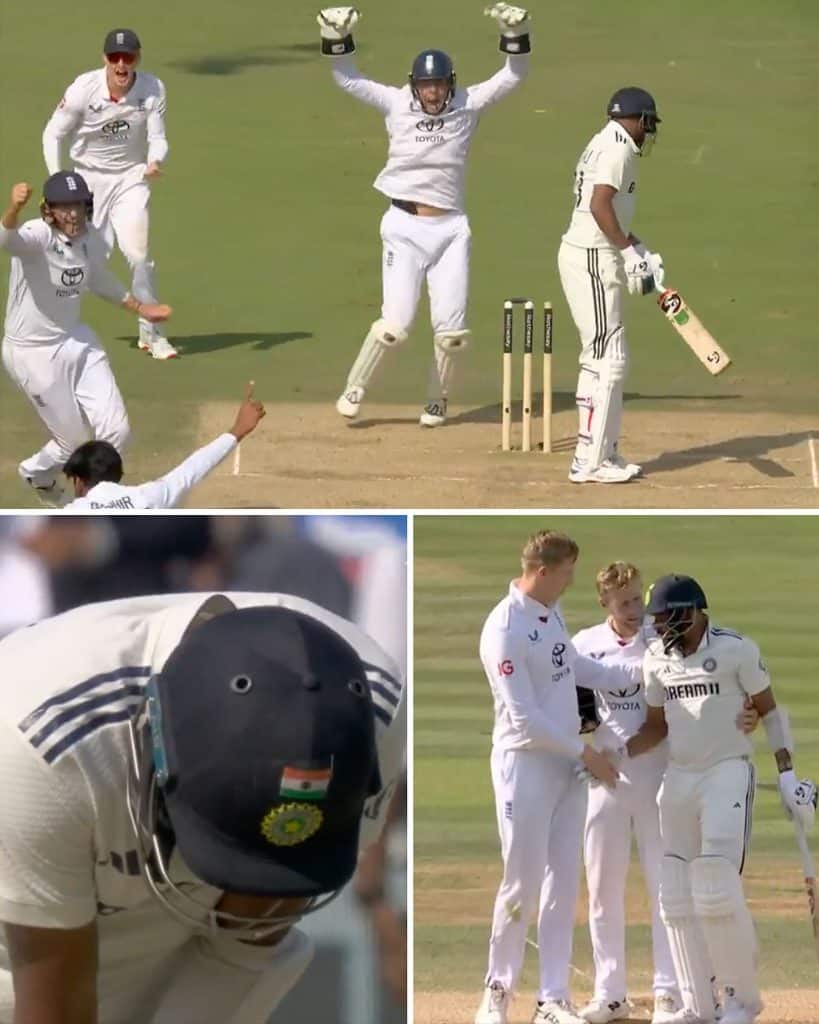The 3rd Test between India and England at Lord’s in July 2025 will be remembered as one of the series’ most dramatic contests—a match where India, after dominating for four days, succumbed to a 22-run defeat, handing England a crucial 2-1 lead in the series. For large stretches of the match, India looked in control, only for a disciplined English attack and some key moments under pressure to flip the script on the final day.
England’s First Innings: A Competitive Start
- England: 387 all out (Root 104, Stokes 44, Pope 44).
- India’s bowlers shared the wickets, with Jasprit Bumrah removing England’s linchpins and Nitish Kumar Reddy providing key breakthroughs. Despite periods of pressure by the Indian attack, England built a competitive total—Joe Root holding the innings together with a battling century.
- Fielding and opportunities: India’s fielders missed a couple of half-chances but overall kept the home side from running away with the game.
India’s First Innings: Parity Restored
- India: 387 all out—an exact match for England’s score.
- KL Rahul and Rishabh Pant constructed crucial partnerships, but like England, India’s lower order failed to capitalize on the platform, with innings ending tamely. England’s bowlers, led by Ben Stokes and Jofra Archer, stuck to disciplined plans, stalling India’s charge at key intervals.
England’s Second Innings: Indian Bowlers Dominate

- England: 192 all out.
- Day 4 belonged to Washington Sundar, who claimed 4-22—the best figures by an Indian spinner in England in over two decades—dismissing Root, Stokes, and then running through the lower order. Bumrah and Siraj took two wickets each.
- Indian bowlers were relentless, exploiting bounce and variable pace, never letting England’s batters settle. Root and Stokes threatened another stand, but Sundar’s penetration ended hopes of a fighting England total. With the target set at a seemingly modest 193, pundits and fans tipped India as favorites.
The Chase: Twist at Lord’s
- India, chasing 193, lost Jaiswal early for a duck. By the close on Day 4, England, bowling with aggression, had triggered a mini-collapse—Karun Nair, Shubman Gill, and nightwatchman Akash Deep all gone, leaving India 58/4 overnight.
- The pitch had come alive: variable bounce and lively carry made the chase far from straightforward. Brydon Carse and Ben Stokes ramped up the pressure with incisive spells, before Stokes’ celebrations and verbal exchanges added to the tension.
Day 5: Agonizing Collapse
- Needing 135 more with six wickets in hand, India looked to KL Rahul and Rishabh Pant for a steadying partnership, but both fell early to clever bowling from Archer and Carse. Ravindra Jadeja tried to shepherd the lower order, producing a gutsy unbeaten half-century, but wickets fell steadily at the other end.
- Stokes and Archer’s discipline was matched by bashful support from the fielders. Woakes and Carse chipped in as the ball continued to misbehave.
- The final blow came with Siraj’s dismissal—bowled by Shoaib Bashir—ending India’s innings at 170, 22 runs short of the target.

Expert Analysis: How India Let Victory Slip
Four days of dominance unravelled on the fifth. Here’s how:
- From control to chaos: India’s bowlers had engineered an advantage with disciplined spells, most notably from Sundar. England’s collapse on the fourth day looked to have ceded all initiative.
- Batting nerves and pitch demons: The Lord’s surface, which had provided even bounce for most of the match, suddenly came alive. Indian top order—except Rahul and Jadeja—could not adjust quickly enough to the new ball movement and the increasing variable bounce.
- Lower order exposed: Once Pant perished and Rahul nicked off, India’s inexperienced lower order, save for Jadeja, found the pressure overwhelming.
- Stokes and Carse’s tactics: England’s bowlers used the short ball judiciously and set aggressive fields. Stokes, both with the ball and his leadership, kept relentless pressure—taking three wickets and inspiring his side with confrontational intensity.
Turning Points:
- England’s late wickets on Day 4 (removing Gill and Deep cheaply).
- Sundar’s spell in the previous innings, which raised expectations and perhaps relaxed the batters mentally.
- The absence of substantial contributions from senior Indian batters when it mattered most under pressure.
Aftermath and Implications
This defeat will sting India: after outplaying England with the ball and being favorites at the start of the chase, they found themselves on the wrong end of a classic Lord’s finish. England now lead 2-1, the momentum shifting firmly their way as the series heads to its decisive final stages.
For India, the challenge will be psychological as much as tactical—regrouping, shoring up the middle order, and restoring the composure that served them through four hard-fought days but deserted them when it mattered most.
As the teams prepare for the fourth Test, this Lord’s heartbreak will be a stern lesson in the ruthlessness required to close out Test matches, especially on English soil.

